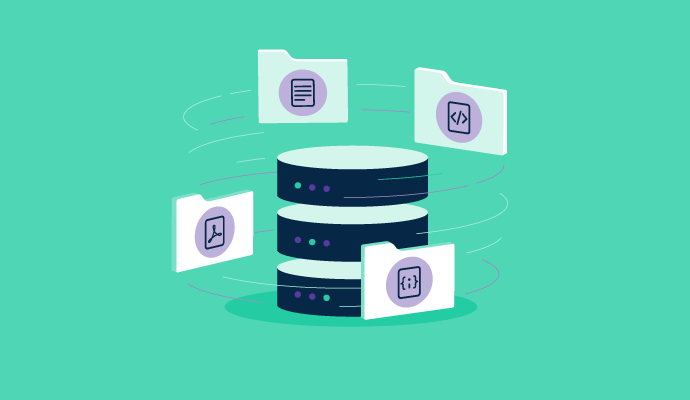What is data quality?
Data quality refers to the condition of a collection of data based on several factors. A dataset with high data quality assurance is considered fit to fulfill company needs. This means that the data is accurate, relevant, unique, and updated. Low-quality data is usually disorganized, inconsistent, incomplete, and open to security vulnerabilities.
Data quality management ensures that quality standards and procedures are implemented successfully and continued throughout the data process. It includes profiling data and its current state, reporting data goals and errors, repairing broken data, and enriching future data by monitoring it in the long term.
Data quality software analyzes datasets using artificial intelligence to identify improper, inconsistent, and incomplete data while adhering to company standards.
Data quality tools also allow businesses to automate how they identify anomalies, conduct preventative measures to preserve quality, implement automated cleansing functions, and offer modification and standardization. Some companies will integrate data management platforms to streamline the way they organize and move around their data.
Why is data quality important?
Data is essential for companies that use it to influence their decision-making, make changes to production, and conduct overall business risk management analyses.
Ensuring that data quality is up to par is more than just checking that it’s “good.” It involves collecting data from trusted sources, conducting frequent quality assurance and maintenance checks, and using that data effectively in business planning. High-quality data helps companies improve their trustworthiness and increases the quality of their business practices.
Low-quality data can cause significant issues for a company. The following outlines how data can negatively impact a business that does not prioritize data quality.
- Inaccurate market data will cause companies to miss growth opportunities.
- Bad business decisions can be made based on invalid data.
- Incorrect customer data can create confusion and frustration for the company and the customer.
- Publicizing false data quality reports can ruin a brand’s reputation.
- Storing data inappropriately can leave companies vulnerable to security risks.
Factors affecting data quality
Seven major factors contribute to the quality of business data. These factors help companies determine which data areas lack quality and what needs to be addressed to improve the quality.
- Accuracy: How correctly the data reflects the information it is trying to portray.
- Completeness: The comprehensiveness of the data. If data is complete, it means that all the data needed is currently accessible.
- Relevancy: Why the data is collected and what it will be used for. Prioritizing data relevancy will ensure that time isn’t wasted on collecting, organizing, and analyzing data that will never be used.
- Validity: How the data was collected. The data collection should adhere to existing company policies.
- Timeliness: How updated the data is. If company data isn’t as up-to-date as possible, it’s considered untimely.
- Consistency: How well the data stays uniform from one set to another.
- Uniqueness: Ensures there is no duplication within the datasets.
Benefits of high data quality
Good data quality is not easy to lock down, but the benefits make it worth the effort. Companies that prioritize their data quality use that data to improve how they run their business.
- Improve decision-making by having the most accurate data for making effective decisions. Quality data helps companies avoid the risks of trial and error and feel more confident changing business processes according to data findings.
- Increase revenue by understanding market trends and customer needs and acting on them before competitors.
-
Edit marketing efforts to reach the target audience in the most sufficient way. Collecting the right data gives companies the insights they need to truly understand their target market. With that information, companies can change their marketing techniques to fit their ideal customer profile (ICP).
For example, if data shows that an audience is less active on Facebook and more active on Twitter, the company should consider investing more into marketing campaigns on Twitter. This will also promote customer satisfaction by editing campaigns to give the target audience what they are looking for.
- Save time by only collecting the necessary data. Data quality ensures that all data collected will serve a purpose.
- Leverage competitive data by gaining insight into the industry. Quality market data will not only gather information about the target audience, but the entire industry. This includes data about competitors and what they are doing in the market. Companies can use this to predict market trends, gain a competitive advantage, and speed up business moves to promote growth.
How to improve data quality
There are a few steps companies can take to identify the quality of their data and start improving it.
- Conduct data profiling. Data profiling is a process that assesses the current state of a company’s data quality.
- Determine how data impacts business. Companies must do internal testing to see how data affects their business. Data could help them understand their audience better or hinder them from successful demand planning. If data is impacting a company negatively, it is time to address data quality and take steps toward improving it.
- Check sources. If a company is trying to improve its data quality, it should start from the beginning. Sources should be checked for quality and data security. If companies gather the data themselves, they should prioritize user experience to avoid mistakes in data collection.
- Abide by data laws. Incorrectly collecting and storing data can get companies in trouble with the law. There should be clear guidelines on who can see data, where it can be kept, and what it can be used for. Following these laws closely also helps companies refrain from using old or incorrect data by creating a system for removing it securely.
- Implement data training. Data only gets better when used correctly. Companies should prioritize training to help teams understand available data and utilize it effectively.
- Perform frequent data quality checks. After working so hard to improve quality, companies need to continue that momentum by prioritizing data quality control and conducting consistent data monitoring. This will help identify common mistakes and avoid data-driven errors before they become costly.
- Collaborate with data experts. When in doubt, companies should lean on those who specialize in improving data quality. Data scientists and analysts can guide companies towards higher data quality and ensure compliance along the way.
Data quality best practices
There are a few things companies can do to prioritize their data quality. These best practices outline how to maintain data quality in the long term.
- Keep communication open. This includes communicating data quality standards with everyone from new employees to top company leadership.
- Document everything. Anytime an error or mistake is identified, companies should create a log to ensure that something of that nature doesn’t happen again.
- Utilize legal experts. Companies can outsource legal counsel to guarantee compliance with their data quality procedures.
- Protect sensitive data. The last thing a company needs is to put their data in the wrong hands. Businesses should invest in top security measures for their data, like data masking.
- Automate as much as possible. Data software can help minimize the chances of human error.
Data quality vs. data integrity
Data quality determines whether a data set is accurate, complete, relevant, updated, and unique. It ensures that the data at hand is in the proper condition to be used and trusted. Data quality is a subset of data integrity.
Data integrity is the big picture that determines just how valuable the data will be in practice. This includes maintaining data so it’s in the proper condition throughout the entire lifecycle. Data integrity is made up of data quality, data integration, location intelligence, and data enrichment.
Data integration provides well-rounded insights, location intelligence adds more information about where data is pulled, and data enrichment analyzes data to give it meaning. With all of those processes working together, data integrity ensures data is collected as intended, secures the data both physically and logically, and avoids changes that could jeopardize quality and validity.

Alexandra Vazquez
Alexandra Vazquez is a Senior Content Marketing Specialist at G2. She received her Business Administration degree from Florida International University and is a published playwright. Alexandra's expertise lies in writing for the Supply Chain and Commerce personas, with articles focusing on topics such as demand planning, inventory management, consumer behavior, and business forecasting. In her spare time, she enjoys collecting board games, playing karaoke, and watching trashy reality TV.





















